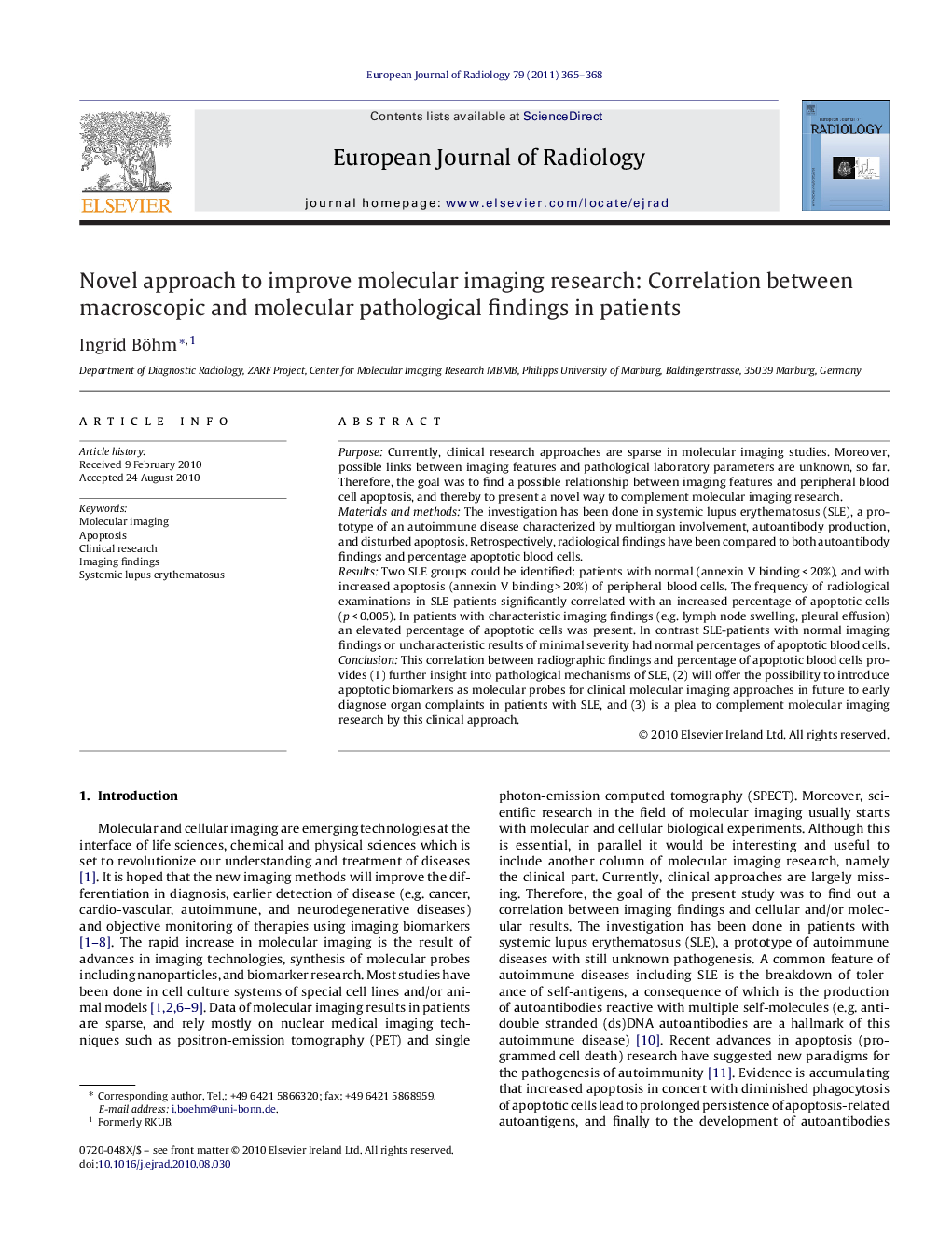| Article ID | Journal | Published Year | Pages | File Type |
|---|---|---|---|---|
| 4226372 | European Journal of Radiology | 2011 | 4 Pages |
PurposeCurrently, clinical research approaches are sparse in molecular imaging studies. Moreover, possible links between imaging features and pathological laboratory parameters are unknown, so far. Therefore, the goal was to find a possible relationship between imaging features and peripheral blood cell apoptosis, and thereby to present a novel way to complement molecular imaging research.Materials and methodsThe investigation has been done in systemic lupus erythematosus (SLE), a prototype of an autoimmune disease characterized by multiorgan involvement, autoantibody production, and disturbed apoptosis. Retrospectively, radiological findings have been compared to both autoantibody findings and percentage apoptotic blood cells.ResultsTwo SLE groups could be identified: patients with normal (annexin V binding < 20%), and with increased apoptosis (annexin V binding > 20%) of peripheral blood cells. The frequency of radiological examinations in SLE patients significantly correlated with an increased percentage of apoptotic cells (p < 0.005). In patients with characteristic imaging findings (e.g. lymph node swelling, pleural effusion) an elevated percentage of apoptotic cells was present. In contrast SLE-patients with normal imaging findings or uncharacteristic results of minimal severity had normal percentages of apoptotic blood cells.ConclusionThis correlation between radiographic findings and percentage of apoptotic blood cells provides (1) further insight into pathological mechanisms of SLE, (2) will offer the possibility to introduce apoptotic biomarkers as molecular probes for clinical molecular imaging approaches in future to early diagnose organ complaints in patients with SLE, and (3) is a plea to complement molecular imaging research by this clinical approach.
